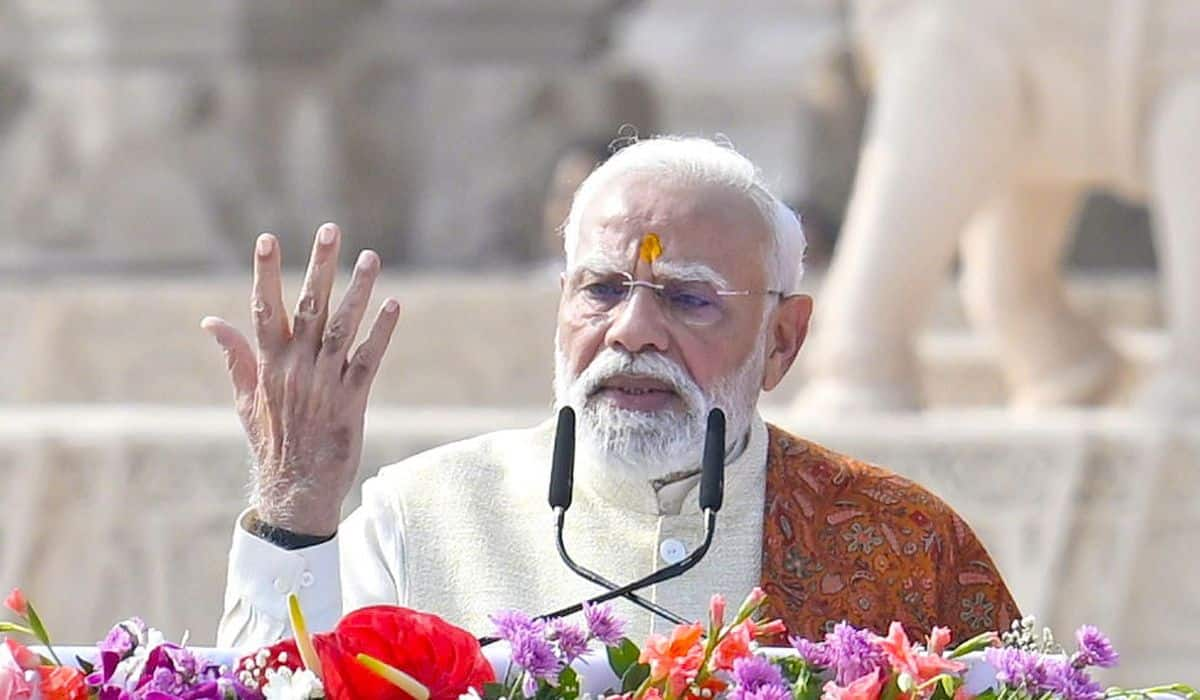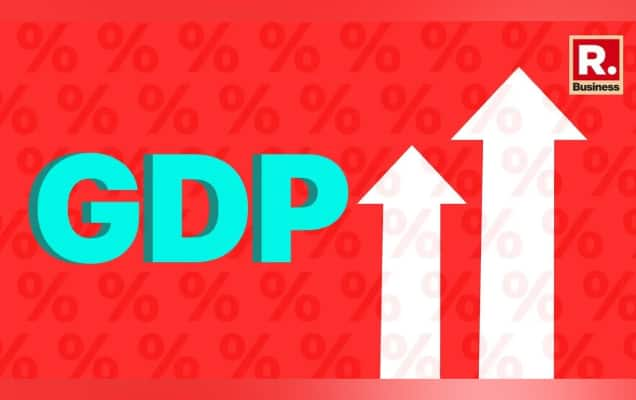Dear Friends,
I had the privilege of felicitating bright, meritorious students of the Muslim community in Ahmedabad last week, on invitation by the Gujarat Ajmeri Charitable and Education Trust. It was extremely encouraging to see the enthusiasm and exuberance for education on display amongst the young people gathered there, and girls in particular. The girls interestingly had outperformed the boys that evening, securing 65 per cent of the awards and recognitions.
Leaders of the Muslim community were also present in large numbers at the function; and it was heartening to see a similar enthusiasm and drive amongst them for getting their newer generations educated, to consequently progress and prosper.
It has always been very clear and obvious to me that education is one of the most powerful drivers for bringing about progress and development in society. The evening thus augured well for a bright shining future of our beloved nation.
I would like to share with you some of the thoughts I had submitted that evening, as I had found the present audience meaningfully engage and explore them.
Minorities in India have for years been deceived and exploited in the name of vote-bank politics; ending up being used as mere ballot paper – with no one seeming to see or care for the human being behind.
Gujarat has managed to rise above this trap of minority-majority considerations, to focus on all six crore Gujaratis as one. We have always maintained and aimed for universal objectives, without any form of discrimination or bias - all students should get good education; all children should be healthy; and all poor should benefit from welfare schemes. Just as even if one organ of a body is weak, the body cannot be considered healthy; I have always believed that my Gujarat cannot be considered developed if even one section of its society is left behind or weak.
True Development therefore has to be all-round, inclusive, comprehensive and sustainable.
We have often heard the Prime Minister addressing us from the ramparts of Red Fort on August 15 as Hindus, Muslims, Christians, Sikhs and so on. I wonder why he cannot address us simply as 'my dear countrymen', rather than breaking us up like this? Isn't this important to maintain the unity of our nation!
Secularism is a term interpreted in many different ways by different people. For me, it has always been something very simple - putting India First – designing policy, making decisions and taking actions in the best interests of the nation. When we look after India's interests, the interests of every Indian are automatically cared for.
My government therefore functions on the principle of 'justice to all and appeasement to none'. And Gujarat is accordingly marching ahead with the mantra of 'sabka saath, sabka vikas' (Support from all, Development for all).
Friends, these thoughts that I had explored with the gathered audience that evening, are not mere wishes or fancy imagination. Gujarat has achieved concrete results based on them over the past decade. And it is not me or my government saying so; but in fact a Committee headed by a retired Justice, Justice Rajinder Sachar; constituted by the central government of Dr. Manmohan Singh in 2005; doing so.
The Sachar panel was formed to study the socio-economic conditions of Muslims in India and the report was tabled in the Parliament on 30th November 2006. An analysis of the report presents a clear understanding of the progress made by Gujarat's Muslims, especially in comparison of their counterparts in other states. The compiled data also exposes the deplorable status of Muslims in states which are singing paeans of secularism, but in-fact playing vote-bank politics.

Presentation on Sachar Committee Report
Here are some revealing statistics from the Sachar report:
Education
- Muslims in Gujarat have a literacy rate of 73.5 %, compared to the national average of 59.1%
(Source: Sachar Committee Report)
- The literacy rate of Muslims in Gujarat is 73.5% which is 5 points higher than that of the Hindus which is at 68.3%.
- Rural Muslim women’s literacy is 57 % compared to national average of 43 %
- Urban Muslim women average literacy rate is 5 points higher than national average
- Amongst those who completed their secondary education, Gujarat is at 45.3% ahead of national average of 40.5 %
- Amongst those who passed higher secondary level, Gujarat with 26.1 % is ahead of national average of 23.9 %
(Source: Sachar Committee Report)
- In the average years of secondary schooling between ages of 7-16, Gujarat once again is ahead with 4.29 % of national average 3.26 %
- In villages with over 2000 Muslim population access to education is 100 per cent with national average at 98.7 %
- In the population range of 1000 to 2000, 99.9 % villages have education facilities as against national average of 95.4 %
- As for the villages which have a population of less than a 1000, 98.6 % of the villages have education facility as against national average of 80.4 %
- In villages where Muslim population is more than 2000, healthcare is accessible to 89.9 % of the villages of Gujarat against national average of 70.7 %
- 66.67 % of villages have medical facilities against national average of 43.5 % in 1000-2000 population range
- 53 % of the villages have medical facilities against national average of 20.2 % in areas with less than 1000 Muslim population
|
Population of Muslims |
Facility of Education Available |
Facility of Primary Health Centre Available |
Post and Telegraph Service Available |
Bus Stop Available |
Pucca Approach RoadAvailable |
| Category - A Villages where population is less than 1000 and population of Muslims is more than 40% |
97.7% |
52.9% |
56.8% |
93.0% |
69.6% |
| Category - B Villages where population is between 1000 to 2000 and population of Muslims is more than 40% |
100% |
68.1% |
88.1 |
98.1% |
90.6% |
| Category - C Villages where population is more than 2000 and population of Muslims is more than 40% |
100% |
89.8% |
99.6% |
99.6% |
94.7% |
(Source: Sachar Committee Report)
Financial Status
Per month per capita income for rural Muslims:
- It stands at Rs 668 while that of Hindus is Rs 644. This is much higher than that of Andhra Pradesh (Rs 610); West Bengal (Rs 501); UP (Rs 509); Karnataka (Rs 532); MP (Rs 475)
- Similarly urban areas too have shown higher income than the national average
- Prosperity of Muslims in Gujarat compared to other states is also reflected in terms of the bank account-wise average deposit. For instance, in Gujarat it is Rs 32,932 compared to Rs 13, 824 in West Bengal and Rs 26,319 in Assam
- Far ahead of other states in India, villages with 2000 population – 96.7%, 1000-2000 population – 89% , 1000 and less – 72.3%
Proportion of Muslims in Public Sectors
|
States |
Proportion of Muslims in Total Population |
Proportion of Muslims in High Posts |
Proportion of Muslims in Class 1 Officer Posts |
Proportion of Muslims in General Category Employee Posts |
|
Gujarat |
9.1 % |
8.5 % |
9.9 % |
16.0 % |
|
West Bengal |
25.2 % |
1.2 % |
- |
6.3 % |
|
Kerala |
24.7 % |
9.5 % |
9.5 % |
11.1 % |
|
Uttar Pradesh |
18.5 % |
6.2 % |
7.9 % |
5.3 % |
|
Maharashtra |
10.6 % |
1.9 % |
1.6 % |
1.1 % |
|
Tamil Nadu |
5.6 % |
3.2 % |
2.6 % |
2.6 % |
Employment of Muslims in critical departments of the government such as Home Department, State Transport Department, and public sectors is very high. The percentage of Muslims occupying higher posts is also far greater in Gujarat compared to other States. I will give only one comparison. Of the 25.2 per cent Muslim population of West Bengal, only 2.1% have benefited from government jobs. Gujarat with only 9.1% Muslim population, 5.4% have government jobs.
Home Department (Proportion of Muslims in High Posts)
|
States |
Proportion of Muslims in Total population (in percent) |
Proportion of Muslims in High posts (in percent) |
|
Gujarat |
9.1 |
7.9 |
|
West Bengal |
25.2 |
16.6 |
|
Kerala |
24.7 |
7.3 |
|
Bihar |
16.5 |
8.1 |
|
Maharashtra |
10.6 |
1.9 |
|
Delhi |
11.7 |
4 |
|
Tamil Nadu |
5.6 |
0 |
|
Karnataka |
12.2 |
2.1 |
|
Jharkhand |
13.8 |
4.2 |
|
Assam |
30.9 |
2 |
(Source: Sachar Committee Report)
Real development should not make anyone dependent on the government. Our policy for sustainable growth of any community should be to make them self-reliant. Our collective efforts should be towards inclusive growth to empower the communities. Let us therefore work for the growth of every Indian to make growth inclusive in the real sense of the term.
















